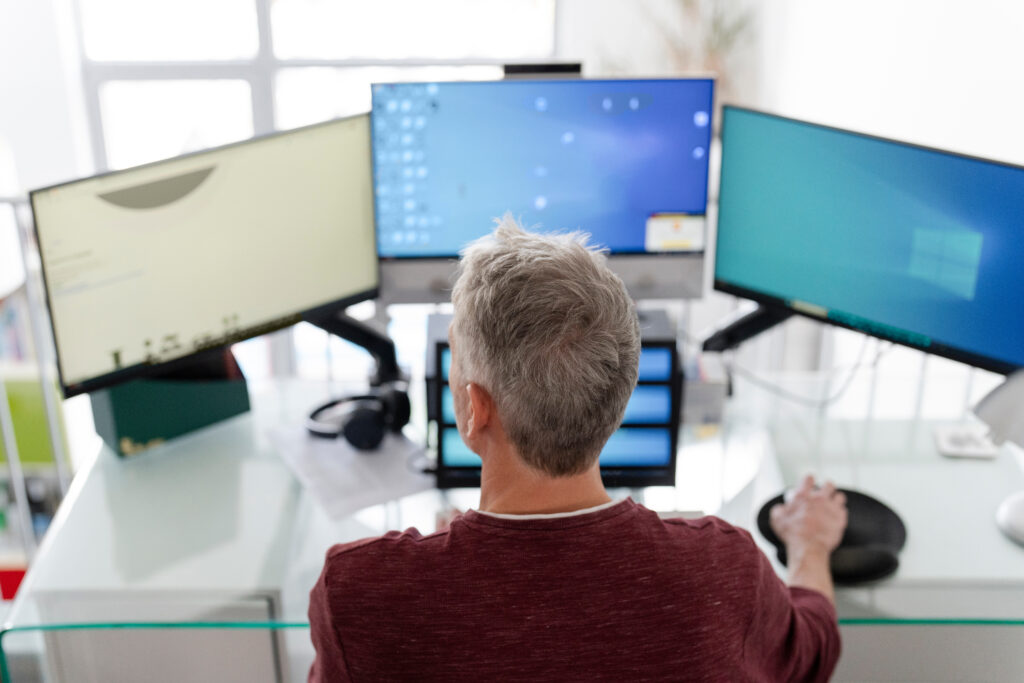The disastrous experience of Loi 107 (or what is about to happen to you)
The outcome of the 100 days of “hot desking” or “dynamic collaborative space’’ experience for DGs DIGIT, HR, SCIC and for EPSO is available on the intranet. 100 days stocktaking summary article for flex work website.pdf (europa.eu)
As you will recall, staff of these Directorates-General (DGs) and Office alternate between teleworking and being present at Loi 107, a working space organised in “dynamic collaborative space’’ mode. This so-called “100-day stocktaking” (a long overdue deadline) was carried out with the aim of “gathering knowledge on both needs and good practices to both improve the situations for DGs and services which have moved to flexible workspaces and ensure optimal conditions for services moving in the future’’. Because all DGs will gradually move to this type of organisation.
What are the lessons to be learned from this experience?
The 100-day report states that “the flexible working team are committed to helping the DGs to find solutions to these issues, within the budgetary limits and constraints of individual building construction“.
It is interesting to note that, only if the above conditions are met, it will be possible to :
· Change the configuration of the floors,
· Addressing temperature problems,
· Apply noise reduction measures (e.g. quieter rooms, increase the number or change the type of meeting rooms, installation of call zones, partial or complete closure, stopping certain open areas, increase the number of partitions, sound absorbing panels, noise cancellation, headphones…),
· Having additional computer equipment, such as extra sockets, chargers, monitors,
· Having more access to catering facilities (restaurants and cafeterias) …
Does this ‘provision’ absolve OIB of any responsibility for the inadequacy of the space for the real needs of the teams? The excuse to say ‘no’ is already written.
Should such a document be given any credit? Certainly not. This inventory of measures concerning the physical working environment alone was drawn up by the administration after consultation with staff not trained in occupational health and safety.
This report consists of an inventory of measures concerning the physical working environment alone, the effectiveness of which is doubtful. For example, the measures concerning noise are not effective. At Loi 107, the number of ‘quiet rooms’ is insufficient. Staff work while being exposed to the discussions of their colleagues, whether online or offline : this affects their concentration and has an impact on their health to varying degrees (for more information click here )
Yet tools and solutions are available for employers who wish to protect their employees in open spaces from noise. Click here and here to know more about it.
The document is silent on the actions to be taken to manage the rotation of services. Yet, in this respect, lessons should have been learned from the incidents that have been reported (emergency transfer of Career Guidance Officers to another building due to the incompatibility of the working environment with the department’s tasks, unsuitability of the working space for the Ethics department), or announced (insufficient capacity of Law 107 in the event of units being present in their entirety three days a week); all of these are daily headaches for managers…
And that is without taking into account the fact that the Loi 107 building does not fulfil its mission of being a dynamic and collaborative working space. It is a fact that since 2019, the year of the European Commission’s decision on the new working environment, DG HR has not deployed a method for joint projects, nor has it provided managers with the tools to manage their teams remotely.
In short, this report is not an analysis of occupational health and safety risks designed to identify preventive measures for the benefit of staff working in hybrid mode, an action that is all the more necessary, given that the European Commission “omitted” to do so before its staff moved to Loi 107.
As far as telework is concerned, the same observations apply: standardised and limited communication on home ergonomics, reimbursement of the ergonomic chair and the screen. These efforts are certainly commendable, but they do not meet the needs of colleagues who do not have a suitable workspace.
The argument of the employer’s limited means is not admissible.
In the absence of any risk analysis, many preventive measures are lacking: those concerning the vision and hearing of staff overexposed to new technologies, the organisation of working time between different work areas, or those concerning the route to work…
Faced with these organisational dysfunctions (see appendix above, “The burn-out factory“), one can only wonder about the ability of occupational health and safety services to prevent the risks that this type of arrangement generates in the long term.
Union Syndicale, therefore, calls for a comprehensive approach to health and safety in hybrid working. Whether one is teleworking or working in the office in dynamic mode, solutions exist (including the provision of individual offices to preserve confidential work). It is the duty of DG HR to make them available, once it has finally addressed the lack of risk analysis.





